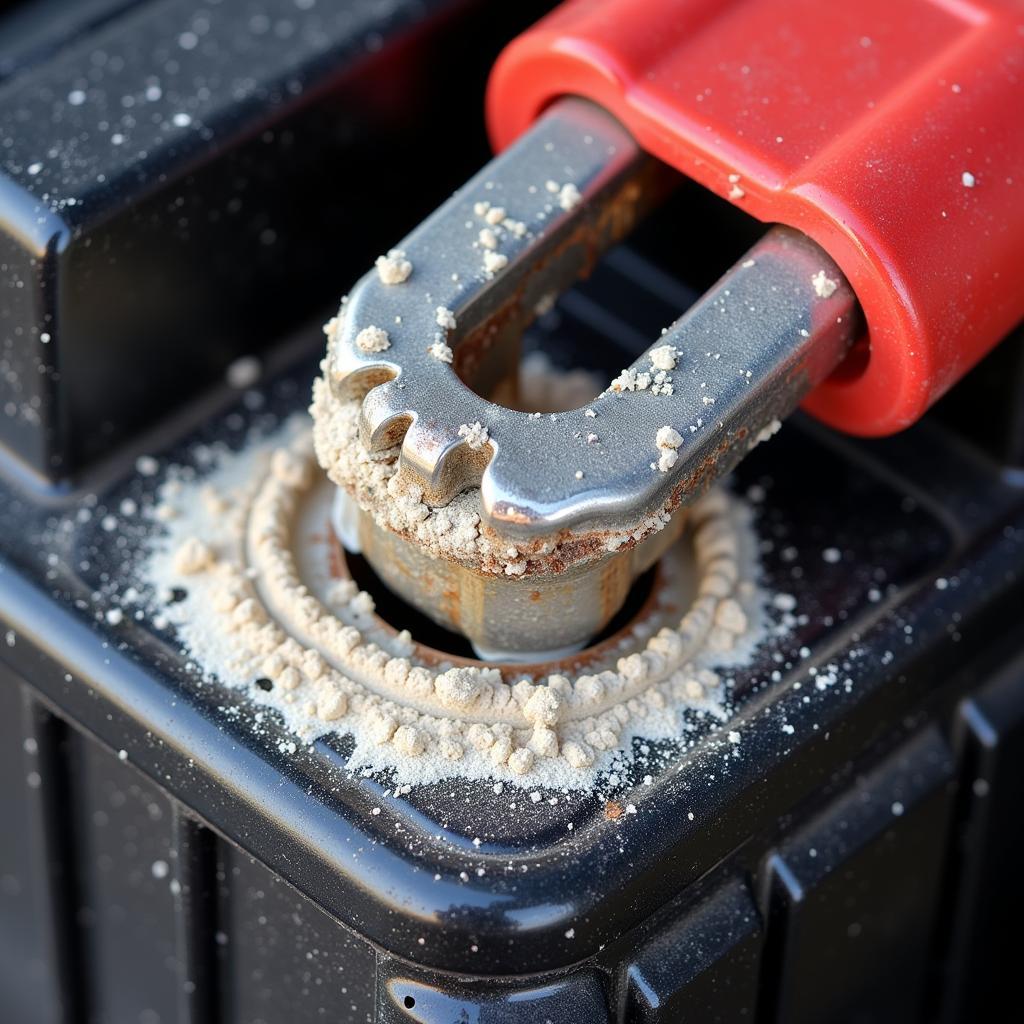A dead car battery is a frustrating experience, leaving you stranded and unable to start your vehicle. Understanding the cause of a dead car battery is crucial for preventing future occurrences and ensuring your car is always ready to go. From parasitic drains to failing alternators, this guide covers the common reasons behind a dead battery, along with diagnostic tips and solutions. remote car starter draining battery can also be a culprit.
Common Culprits Behind a Dead Car Battery
Several factors can contribute to a dead car battery. Some of the most common causes include:
- Old Age: Car batteries have a limited lifespan, typically lasting 3-5 years. As a battery ages, its internal components degrade, reducing its ability to hold a charge.
- Extreme Temperatures: Both extreme heat and cold can negatively impact a battery’s performance. Heat can accelerate the chemical reactions within the battery, leading to faster deterioration. Cold temperatures can thicken the battery’s electrolyte, making it harder for the battery to deliver power.
- Parasitic Drain: This occurs when electrical components continue to draw power even when the car is off. Common culprits include interior lights, faulty door switches, and aftermarket accessories.
- Failing Alternator: The alternator is responsible for recharging the battery while the engine is running. A faulty alternator can prevent the battery from being adequately charged, leading to a dead battery.
- Short Trips: Repeatedly starting the car for short trips without allowing sufficient time for the alternator to recharge the battery can contribute to premature battery failure.
- Corrosion: Corrosion on the battery terminals can disrupt the flow of electricity, preventing the battery from being charged or discharged properly.
 Corroded Car Battery Terminals
Corroded Car Battery Terminals
Diagnosing the Cause of a Dead Car Battery
Identifying the specific cause of a dead car battery requires some troubleshooting. Here are some steps to help you pinpoint the problem:
- Visual Inspection: Check the battery terminals for corrosion. Clean any corrosion with a mixture of baking soda and water.
- Battery Test: Use a multimeter or a battery tester to check the battery’s voltage. A fully charged battery should read around 12.6 volts. A significantly lower reading indicates a problem.
- Parasitic Drain Test: With the car off, disconnect the negative battery cable and connect an ammeter in series between the cable and the battery terminal. A reading higher than 50 milliamps suggests a parasitic drain.
- Alternator Test: With the engine running, check the battery voltage. A properly functioning alternator should maintain a voltage between 13.5 and 14.5 volts.
If you’re experiencing a c6 corvette dead battery, the diagnostic process remains the same.
Preventing Future Dead Batteries
Several preventative measures can help extend the life of your battery and avoid future dead battery situations:
- Regular Battery Maintenance: Clean the battery terminals regularly and have the battery tested annually.
- Limit Short Trips: If possible, combine short trips or allow the car to run for a longer period to ensure the alternator adequately recharges the battery.
- Turn Off Accessories: Make sure all lights and accessories are turned off when the car is not in use.
- Park in a Garage: Parking in a garage can help protect the battery from extreme temperatures.
Understanding the reason for car battery draining fast is key to preventing future issues.
What to do if Your Car Battery Dies
Knowing what to do if you encounter a car low battery warning is essential. If your battery dies, you have a few options:
- Jump Start: Use jumper cables to start the car from another vehicle’s battery.
- Battery Charger: Use a battery charger to recharge the dead battery.
- Roadside Assistance: Call for roadside assistance to jump-start or replace your battery.
It’s important to note that even if you can jump-start your car, if the alternator isn’t charging correctly or there is a significant parasitic drain, the battery will likely die again.
“A proactive approach to battery maintenance can save you a lot of hassle and expense in the long run,” says John Smith, Senior Automotive Technician at Smith Auto Repair. “Regularly checking and cleaning your battery terminals can significantly extend its life.”
Conclusion
A dead car battery can be a major inconvenience. By understanding the common causes, implementing preventative measures, and knowing how to diagnose the problem, you can keep your car running smoothly and avoid being stranded with a dead battery. Remember, addressing the underlying cause of dead car battery is crucial for long-term reliability.
 Jump Starting a Car
Jump Starting a Car
“Don’t ignore the warning signs of a failing battery,” adds Jane Doe, Lead Electrical Systems Specialist at Doe Auto Electric. “Addressing the issue early can prevent further damage to your vehicle’s electrical system.”
FAQ
- How long does a car battery last? Typically 3-5 years, but this can vary depending on usage and climate.
- Can I jump start my car myself? Yes, with jumper cables and another vehicle’s battery.
- How can I prevent my car battery from dying? Regular maintenance, limiting short trips, and turning off accessories when not in use.
- What are the signs of a failing alternator? Dim headlights, flickering dashboard lights, and difficulty starting the car.
- What is a parasitic drain? Electrical components drawing power even when the car is off.
- How do I test for a parasitic drain? Use an ammeter connected in series with the negative battery cable.
- How can extreme temperatures affect my car battery? Extreme heat and cold can shorten the battery’s lifespan.


